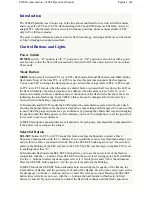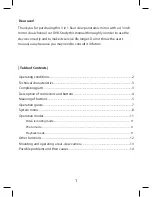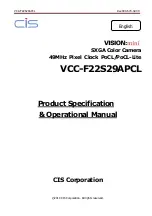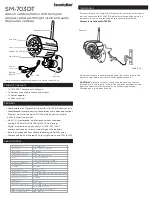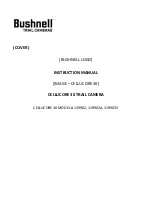
To make photomicrographs with the Retina Reflex, remove the microscope eyepiece, connect the microscope
tube to the micro-attachment, and re-insert the eyepiece. Mount the Retina Reflex on the camera bracket. Focus
through the focusing eyepiece of the attachment using the coarse and fine adjustment of the microscope. The
focusing scale of the camera must be set to infinity and the lens to its largest aperture.
The Stereo Attachment
Stereoscopic photographs may be taken with the Retina Reflex camera by taking two pictures, one immediately
after the other. For this purpose parallelogram or sliding base attachments are available each giving the correct
separation of 64 mm. Both types of attachment must be used in conjunction with a tripod and are only suitable
when the subject photographed is stationary.
A more convenient method of taking stereoscopic photographs with the Retina Reflex (not Reflex IV or S) is,
however, to use the stereo attachment. This consists of an optical system which produces two upright pictures
side by side each measuring 16 x 22 mm. The prisms are so arranged that the two pictures are taken with the
correct separation of 64 mm. which corresponds with the average separation between human eyes.
To use the stereo attachment, fit it over the standard lens by lining up the red dot on the rear of the attachment
with the red dot on the camera lens. The attachment is then turned clockwise into a horizontal position to
engage. The ground glass reflex image shows the correct double image and permits focusing in the usual way.
Stereoscopic pictures can be taken at distances from 6 ft. to infinity.
Exposure times are unchanged for apertures of f5.6 and smaller with the stereo attachment. For wider apertures
double the exposure indicated by the meter by reducing the light value by 1.
Special Finders
RIGHT-ANGLE FINDER. To tackle low angle views, subjects near the ground and copying, a right-angle
viewfinder has been designed for the Retina Reflex (not for III). It fits over the viewfinder eyepiece and is held
in position by a bayonet lock.
FRAME FINDER MODELS. A folding frame finder is available for the Retina Reflex. This fits into the accessory
shoe of the camera and is intended for shooting fast-moving subjects, architectural studies or any shot where it
is desirable to be able to see the field of view immediately outside that of the viewfinder. Its frame gives the
correct field of view for the standard lens and masking devices can be swung into position to cover the field of
the telephoto lenses. Parallax adjustment for close-range work is provided.
FACTS AND FIGURES
This section gives the more important data for Retina Reflex films, lenses, exposure, etc., in handy tabular form
for easy reference.
CONVERSION OF FEET AND INCHES INTO METRIC UNITS
Many cameras are marked only in either the metric or English and
American system, while most of the tables in this book are also given only in
one system. The table below shows at a glance equivalent lengths.
British to Metric
Metric to British
1/8 in.
0.32 cm.
0.5 cm.
3/16 in.
1/4 in.
0.64 cm.
1 cm.
3/8 in.
1/2 in.
1.27 cm.
2 cm.
13/16 in.
1 in.
2.54 cm.
3 cm.
1 3/16 in.
2 in.
5.08 cm.
4 cm.
1 9/16 in.
3 in.
7.62 cm.
5 cm.
1 15/16 in.
4 in.
10.2 cm.
6 cm.
2 3/8 in.
5 in.
12.7 cm.
7 cm.
2 3/4 in.
6 in.
15.2 cm.
8 cm.
3 1/8 in.
7 in.
17.8 cm.
9 cm.
3 1/2 in.
8 in.
20.3 cm.
10 cm.
3 15/16 in.
9 in.
22.9 cm.
12 cm.
4 3/4 in.
10 in.
25.4 cm.
15 cm.
5 7/8 in.
11 in.
27.9 cm.
20 cm.
7 7/8 in.
1 ft.
30.5 cm.
25 cm.
9 13/16 in.
2 ft.
61 cm.
30 cm.
11 3/4 in.





















